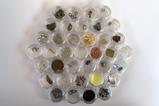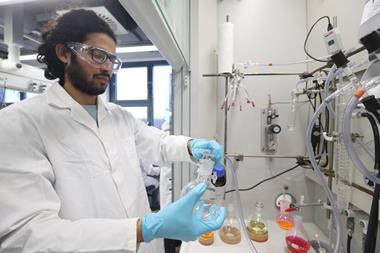Planning ahead for public engagement in 2024

January is a month that holds different delights depending where you are in the world. Here in Australia we are still hopping between the beach and the cool relief of air-conditioned shopping malls, but I know full well that northern hemisphere readers are likely dreaming of their summer holidays and pulling on more layers of clothing.
Wherever in the world you are, one thing is for sure; a new year marks new beginnings and a time to plan for the year ahead. So while you’re setting your intentions for 2024, there’s no better time to consider the ways in which you would like to share chemistry with public audiences or new communities over the next 12 months.
Whether you work in chemical or related industries, or are an academic, teacher or chemistry fan, we can all think about new ways that we might share the beauty of our discipline to people who are already interested in chemistry – and perhaps even more importantly, to those who have not yet had their interest catalysed.
Proactive and reactive communciation
Embedding public engagement as part of cultural events or phenomena is one really effective way to ‘hook in’ new audiences to learn about science and to make it more interesting, engaging or relevant. Inspired by brilliant chemistry communicators such as Andy Brunning (the person behind Compound Interest) and Andre Isaacs (associate professor, chemistry researcher, educator and TikTok sensation), for the past few years I have tried two broad approaches to science communication: proactively planning some pieces that tie into events in the national or global calendar, and remaining open to the possibility of more reactive pieces that respond to a cultural moment or meme.
Brunning and Isaacs are masters of both proactive and reactive content. Recent examples include Brunning’s ‘Chemistry Advent 2023’ series that explored ‘the range of seasonal foods enjoyed at this time of year in countries across the world’ and had clearly been designed in advance to permit the daily reveal throughout December. Whereas Isaac’s response to the viral TikTok ‘Ceiling Challenge’ saw him and his group members sharing a choreographed display of the Wittig reaction with their followers.
I think January is the time of the year to think about more proactive forms of chemistry engagement, but to remain open for reactive opportunities that emerge as the year unfolds.
@drdre4000 Wittig mechanism #chemistry #college #professor ♬ original sound - Ross Smith
How do we link chemistry into our shared culture?
Chemistry is of course ubiquitous; and in some ways this is why it is so hard to communicate. Statements that are truisms for chemists like ‘everything is made of atoms’ or that ‘everything we can see, touch, taste or smell is made up of the elements depicted on the periodic table’ can have the effect of rendering chemistry more invisible. We need to again lean into chemistry’s omnipresence and remember that with some creativity almost any topic can be linked to it, and with the right narrative or framing the science need not feel shoe-horned.
Depending on your cultural context, there are certain events, religious festivals or occasions that happen each year at a fixed time. Here, Compound Interest has a wealth of inspiration. Whether it be the chemistry of blood at Halloween or explaining the colours of autumn, there are many jumping off points to anchor your public talk, lesson or event.
There are also special events happening in 2024. For example, the eyes of the world will turn to Paris for the summer Olympics and provide rich context for discussions relating to materials chemistry (whether you’re running on it, throwing it or jumping over it – the materials make all the difference), drug testing and chemistry as it relates to nutrition for athletes.
The United Nations has declared 2024 the International Year of camelids, which on first glance doesn’t seem particularly ‘chemical’. However, a quick Google Scholar search for ‘chemistry + camelids’ reveals papers on topics as diverse as the chemical composition of camel milk, camelid-derived nanobodies with biomedical applications and camel fertility control.
Suffice to say there are many ways for us to connect chemistry into topics that might be of broader interest as well as celebrating our science more overtly. I find that by exercising some creative planning it’s possible to build confidence for more reactive opportunities as they present themselves. When it comes to the media too, building relationships using your prepared and planned science communication content opens the door to opportunities for chemical commentary that relates to current affairs.
So, if you’re keen to share more chemistry this year, open up your new calendar and start planning!

















No comments yet